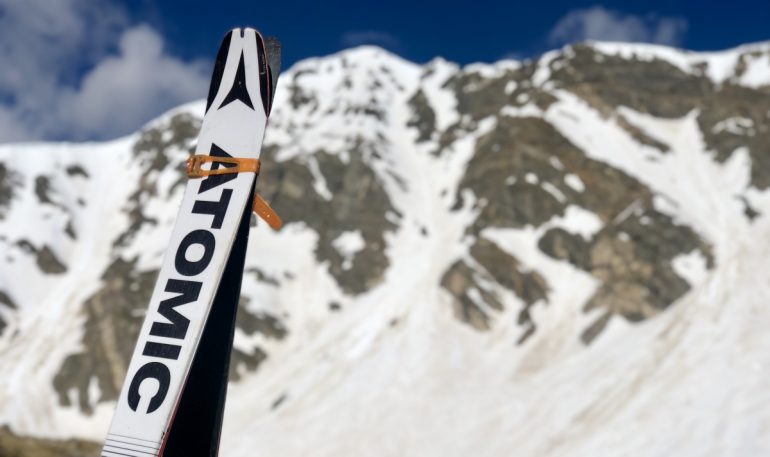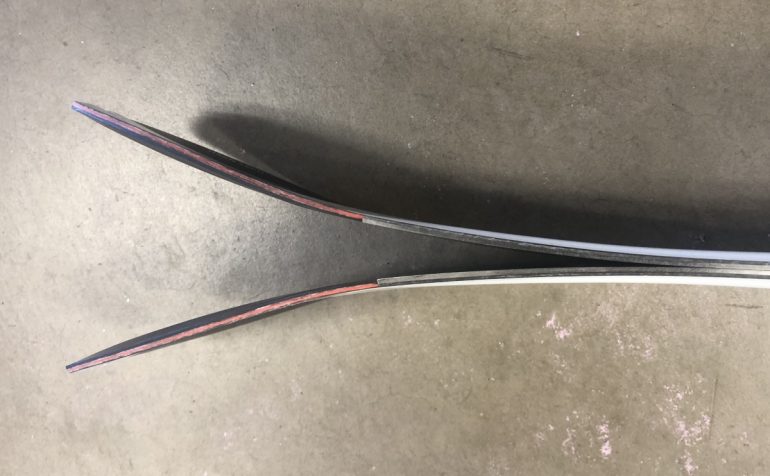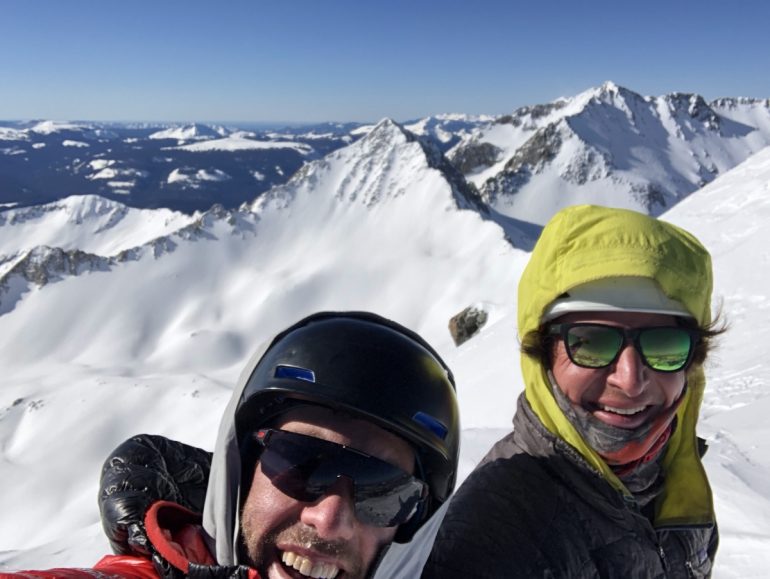The Backland 85 UL: Mountaineering tool to ski them all?
I inched out across the 60 degree snow to gain access to the couloir. Sliding my skis just a few inches, I desperately lunged ahead with my whippet, uncomfortable with even taking it out of the snow for a moment. My only solace came from the grip of my Backland 85 UL ski edges and the countless days I spent getting to know them.
Read about the skis in action.
Summary: The Backland 85 is the widest ski in the UL line from Atomic. For a brand known for downhill performance, Atomic truly hit it out of the park when they stepped into the ultralight game. These have been a personal favorite of mine for the past five years, but when the new iteration dropped 10% in weight with a few other upgrades to stiffness and construction, these became my go-to ski in a wide variety of conditions.
Ideal Skier: Both ends of the spectrum. Suitable for the new uphiller looking for a light ski for exercise at the resort as well as the advanced ski mountaineer who has good balance to overcome these skinnier tools on steep descents.
Ideal Use: The 1000 gram ski for big ascents and descents has long been sought after, but rarely achieved. I have used and loved this ski everywhere from mid winter powder to late season corn, but they feel most at home during long tours and steep skiing when the camera isn’t rolling and you just have to make it down.
Sizing: I usually size my skis around 179 cm so the choice was easy for me to make. Many lightweight skinny skis top out at 175cm, which forces you into downsizing. While I have been happy with my 179s, I would err on the side of going a bit shorter if you are between sizes; it will save weight and increase maneuverability in tight trees or between rocks.
Comparison: In its class, I would compare it most closely with the Dynafit Tour 88 and the Blizzard Zero G 95. Although you give up a slight amount of width, these skis still handle the soft snow as well as the competition. The big savings are in the weight department. These skis came in at 1080 grams while the Dynafit Tour 88 weigh in at 1310 grams and Zero G 95 comes in at 1355 grams. I would also give the literal edge to the skis on steeper harder snow.

The slightly shorter 172 as I could barely read Atomic from knocking my tips together on the pair of 179s
Product Highlights: Still the 1080 gram weight is the most important feature. Other things I like are durable micro sidewalls for dampening and the full rando nerd tip notch for speedy transitions.
Gripes: Deflection. There is no way around this; if you are going fast through chunked up snow these skis will likely go their own direction. I don’t think this is preventable without adding bulk that would change the whole purpose of the ski. Also the hybrid skins that come custom fit for these skis have trouble sticking to the base after many transitions. They are fine for resort skiing, but for the backcountry do yourself a favor and get a pair of glued Pomocas.
Durability: As with all of my gear, I set out to break these. The edges are hacked after 2 season of constant abuse. I never took them off for a down climb. I side stepped over rocks, I hit rocks and I literally threw them down rocks. The bases look like a war-zone and despite all that abuse there is not one blowout on the edge or sidewall. I’d consider this a miracle and for a roughly 1000 gram ski, you will have a tough time finding a more durable option.
Boot/Binding/Skin Combination Scarpa Alien RS, Atomic Backland Binding, Pink Pomoca Race skins cut to width and custom bungee cord for the tip notch!
Specs:
Weight – 1080 grams/ 179cm
Available lengths – 165, 172, 179cm
Dimensions – 118mm Tip, 85 mm Waist 106.5 mm Tail
Core – Ultra Light Woodcore, Carbon Inserts
Profile – 15% rocker, 85% camber, flat tail
MSRP – $850
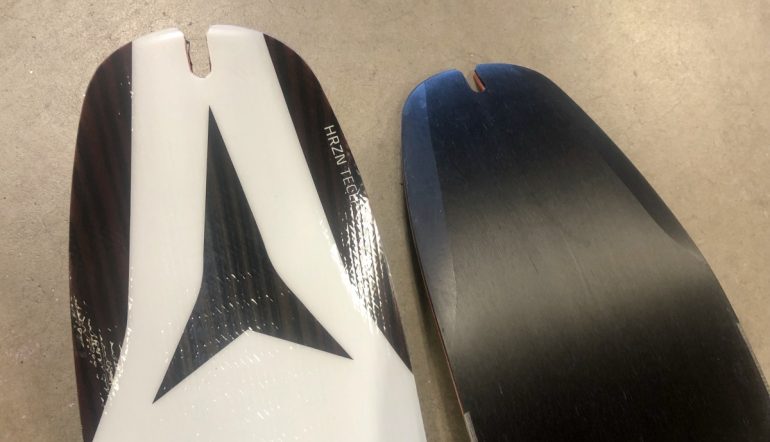
HRZN Technology as seen across the Backland line, because if you are only on an 85 waisted powder ski you might as well get some extra float.
The Backland 85 UL in Action
The story of my testing does not start with my skis teetering over the 60 degree couloir hinted at in the beginning of this post, but instead it begins with cold sweats the night before in the van parked off camber on a neighborhood street in Telluride Colorado. I had been thinking about skiing the “Coors face” of Wilson Peak in the San Juans for too long and had built it into a monstrosity in my mind. My usual beta investigation to abate my nerves was met by the uncharacteristic response from my more ambitious friend’s “the most gripped I have been on skis”. My preparation, which was supposed to consist of practicing jump turns on less exposed terrain, had been intercepted by too many powder days in low angle avalanche free hippie wiggling bliss.
In the gear junkies version of The Tell-Tale Heart, I felt two simultaneous beats pulsing beneath me under the bed of the van. The new Kasetle FX95 HP made the first beat. It was the perfect tool for the job, wide enough to counter any variable conditions and heavy enough to push through adversity. But, the far louder call came from my Backland 85 UL paired with the warm handshake of my Scarpa Alien RS boots. For me, the need for familiarity and efficiency of movement always calls louder than the “broey” heckles from my resort skiing friends. The Kaestle’s had become my charger from the chairlift, but this was a line that I needed to cherish and survive, not rip down as fast as possible.
As we started away from the pile of vehicles heaped around the busy trailhead, the Backlands felt light on my feet. In the amazing winter that we were having, long approaches and lots of vertical had become an inevitability. Our third big day in a row caused some doubt that my lead filled legs were going to be up for another steep descent. However, looking down and watching my tooth picks of skis taking long bites of the skin track before me, gave me confidence that I would at least reach that critical point of decision, the summit.
Next thing I knew, we had pounded past Cody Townsend on the uptrack filming for his “50 Classics Project” and my skis were hanging over the abyss. Cody’s voice came down from above “I guess you are going to ski it first?” I looked out at the empty spot that Jamie had just vacated with his first jump turn and all I could say was “I guess so.” Three thousand feet of leg pounding jump turns later, I was at the bottom of the face with another Colorado 14er successfully in the books.
These skis had proved themselves throughout the season: they linked great turns in slush, crushed uphill on resort training days and even managed deep consecutive powder days when my tired legs couldn’t manage dragging a fatter ski uphill. Finally after a month and a half of avalanche cycles, spring stability had crept in and the Backlands were released into their true habitat of remote high peaks.
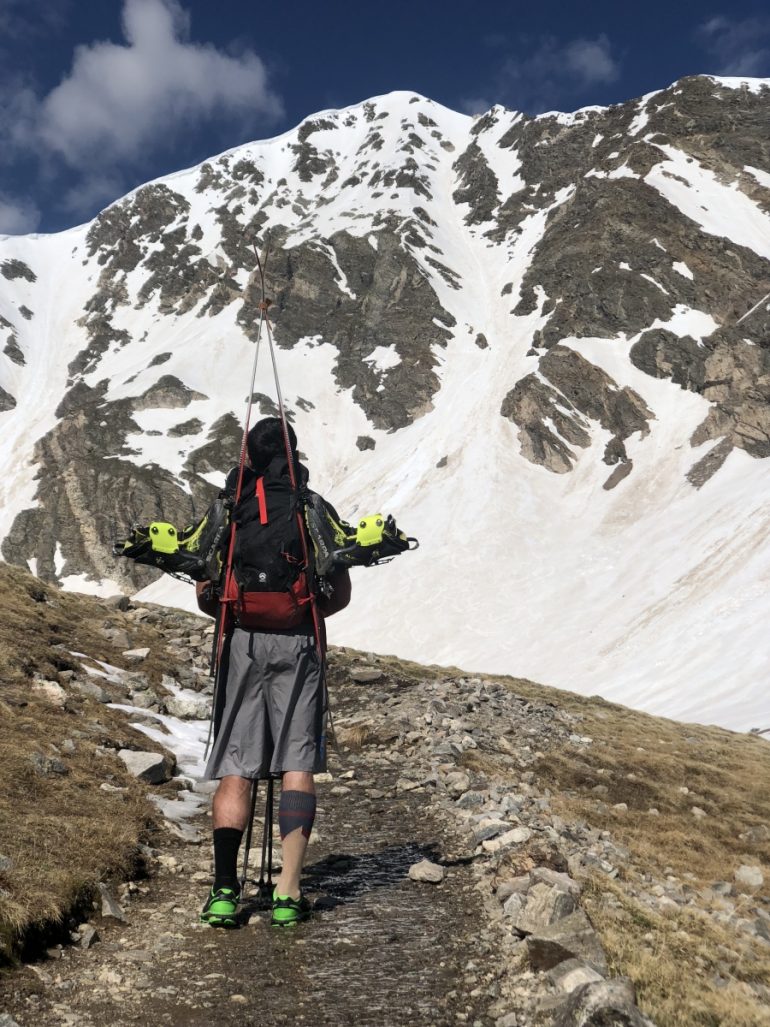
So light on my back on a late June approach to Greys and Torreys: Backland Ski, Binding and Scarpa Alien RS
I skied the Backlands for 100 days over the last two seasons. They weren’t the burly skis I skied the resort with, nor did they have the best edge hold. They weren’t even the lightest, as I had been favoring many different pairs of race skis throughout the season. But, they were the perfect recipe of functionality that made them my most reached for ski.
In the spring they linked great turns from the softest slush and stayed stable on the very firm snow of cloudier days. On training days at the resort they kept me going uphill fast, but offered more fun then the 65mm sticks for racing friends down a groomer. On the deepest days where snow fell the night before, I would undoubtedly take wider boards. However, there is a gray area when the snow is not bottomless and my partners were stronger or better rested than me. Even on these snow filled days, when my legs were hammered and I had another 8000 foot day skinning ahead, I traded out the big sticks for the Backlands.
Most readers would certainly grab a “burly ski” for a “burly descent” and skiing a featherweight ski when your life may count on sticking a couple turns certainly takes some adjustment. However, if you are looking for a ski that will turn at your first thought, before you can have that second thought of better judgment, the Backland 85 maybe the right one for you.
Doug Stenclik is an avid skimo racer and ski mountaineer who lives for sharing the amazing sports of ski touring and splitboarding. Since his first time on skins he was hooked and the obsession has taken him all over the United States and the world pursuing the human powered ski turn. He founded Cripple Creek Backcountry in 2012 and took over the Colorado Ski Mountaineering Race Cup in 2014 to spread knowledge and the love of the sport. In 2019 he took a step back from the ski shop and race promoter life to become a publishing partner with WildSnow.

